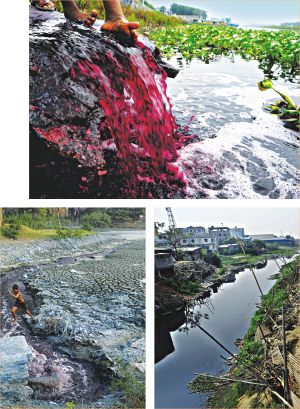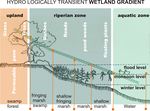Green Infrastructure 2014 Group E - Case Study 2
---> back to group page working group E
Living with water In the urban landscape of Dhaka
| Name | Undeveloped water bodies around Hatirjeel | |
| Country | Bangladesh | |
| City | Dhaka | |
| Authors | Mansura Perveen | |

| ||
|
| ||
Rationale: Why is this case interesting?
Once upon a time, not too long ago, Dhaka was crisscrossed with numerous water bodies. Those water bodies acted as a great asset for the city; the city worked and lived with the water. However, over the years, as the population of the city increased manifold, these beautiful wetlands began to diminish from land filling, encroachment, dumping of waste etc. Hatirjheel was one of these many water bodies. It became a dirty, negative space for the city. At one point the government did realize the importance of reviving these dead water bodies. A major development project was undertaken for Hatirjheel with peripheral roads, bridges, overpass, improved drainage and storm water retention. But it turned out to be more gray and less green than expected, and it failed to capitalize on the original hydrological and ecological cycles. It would be interesting to apply Green Infrastructure Ideas to the development of other water bodies nearby, with an attempt to overcome similar shortcomings.
Author's perspective
I was born and brought up in the city of Dhaka. I recieved my Bachelor of Architecture degree from a local school. I remember visiting my relatives who lived in the vicinity of the site in my childhood. During the early 90s, the water body was very clean and resourceful with a rich flora and fauna, and hosted a variety of activities. I have some very fond memories from my childhood at those places. Very recently some major infrastructure development was carried out, in this area. But even with all these improvements the site seems under-utilized as it failed to restore the previous diversity of the habitat. I thought it would be very interesting to try for innovative green solutions for the adjacent water canals that awaits similar development.
Landscape and/or urban context of your case
- Biogeography, cultural features, overall character, history and dynamics
- Illustrations: maps; sketches; short descriptive analyses
- Illustrations
- Image.jpg
your visual
- Yourimage.jpg
your visual
Analytical drawings
- Please use analytical drawing for visualising the conflicts/potentials of your site
- Analytical Drawings
Green Infrastructure benefits for this site
Environmental Benefits
Preservation of local habitat
Green Infrastructure can attempt to restore the original ecological cycle at the site by regenerating living processes and integrating it with man-made structures.
Retaining storm-water
It can reduce storm-water runoff volumes by utilizing the natural retention and absorption capabilities of vegetation and soils.
Enhanced Groundwater Recharge
The natural infiltration capabilities of green infrastructure technologies can improve the rate at which groundwater aquifers are recharged. Enhanced groundwater recharge can also boost the supply of drinking water.
Improved Water Quality
Green Infrastructure techniques infiltrate runoff close to its source and help prevent pollutants from being transported to nearby surface waters.
Improved Air Quality
Green infrastructure facilitates the incorporation of trees and vegetation in urban landscape, which can contribute to improved air quality.
Increased Carbon Sequestration
The plants and soils that are part of the green infrastructure will serve as sources of sequesting carbon.
Urban Heat Island Mitigation and Reduced Energy Demands
By providing increased amounts of urban green space and vegetation, green infrastructure can help mitigate the effects of urban heat islands and reduce energy demands.
Social Benefits
Creating Recreational Space
Green Infrastructure can improve the life and living of the inhabitants by providing recreational spaces in the form of greenways, parks, urban forests, wetlands etc. This is more true for this site as it was being treated as a dumping back-yard; and also because there is an acute shortage of land in this densely populated city of Dhaka.
Improved sense of community
By increasing access to places for gathering and interacting, Green Infrastructure can boost the sense of belongingness, sense of community among the people. This can be improved to a better extent if the people can participate in the management and maintenance.
Improved Aesthetic Quality
Green Infrastructure can greatly improve the aesthetic quality of the site.
Improved Public Health
With improved environmental and aesthetic quality, reduced pollution, places for exercising activities; Green Infrastructure can imrove the physical, mental and spiritual health of the people.
Economic Benefits
Cost Effective
Green Infrastructure is cost effective as it requires less capital investment and maintenance cost. It can also lessen the associated wastewater pumping and treatment cost.
Reduced Transport cost
Waterways can be an economically efficient and energy-saving mode of transport.
Income Generating Potentials
Income can be generated from various recreation facilities; like boating, fishing etc. Yields from local agriculture can generate income too.
Other economic benefits
Reduced energy consumption and health care cost can be considered as economic benefits.
Potential for multifunctionality
Waterway (Aquatic Zone)
Apart from heavily improving the water retention capacity and flood control an well maintained waterway can also contribute as recreational space. It can augment the city transportation by promoting waterway transportation which can be cheaper, more energy efficient and convenient. It could really take a huge traffic load off the city roads, if the diminished connections between different water bodies of the city were restored.
Edge (Riperian Zone)
Apart from playing a major role in restoring and preserving the ecological cycle of the site by providing habitat for different flora and fauna, the soft edge can help to reduce water pollution by filtration. It can even be used for planned agriculture.
Greenway (Upland Zone)
The green surfaces and vegetation sequesters carbon, and fights against the impacts of climate change. Apart from reducing pollution and enhancing groundwater table recharge, the greenery can create pleasant spaces for social gathering and recreation. The land area that only remains above the water level in dry season can also be used for seasonal agriculture.
All of them can contribute, in their own way, to:
• Improving the aesthetic quality of the site
• Improving the public health of the inhabitants
• Reducing demands and consumption of energy
• Mitigating climate change & heat-island effect
• Generating income in various ways
Projective drawings
- How would you like this case to change in the near future? (in 1-2 years)
- you may add a short explanation here
- And how could it look like in 10-15 years?
- you may add a short explanation here
- Projective Drawings
- Yourdrawing.jpg
projective drawing
- Yourdrawing.jpg
projective drawing
Summary and conclusion
- 100 words approx.
Image Gallery
Please add further images/photos here
- Image Gallery
- Yourimage.jpg
your image text
- Yourimage.jpg
your image text
- Yourimage.jpg
your image text
- Yourimage.jpg
your image text
- Yourimage.jpg
your image text
- Yourimage.jpg
your image text
- Yourimage.jpg
your image text
- Yourimage.jpg
your image text
References
- please add your references here
About categories: You can add more categories with this tag: "", add your categories






